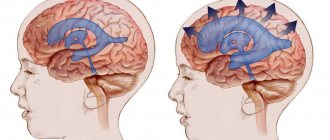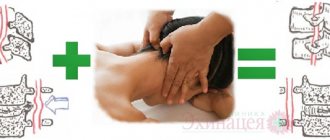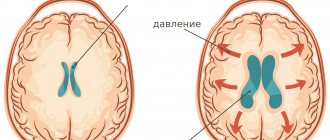Hydrocephalus (ICD code 10 G91) is a disease of the central nervous system, which is accompanied by the accumulation of excess cerebrospinal fluid in the ventricles or spaces between the membranes of the brain. The disease does not always manifest itself with symptoms of increased intracranial pressure. At the Yusupov Hospital, doctors use innovative methods for diagnosing hydrocephalus using modern devices from leading companies in Europe, the USA and Japan. Neurologists prescribe individual treatment depending on the cause, type and severity of hydrocephalus.
All complex cases of the disease are discussed at a meeting of the expert council with the participation of candidates and doctors of medical sciences, neurologists of the highest category, who are leading experts in the field of diseases of the central nervous system. Patients requiring surgical treatment are consulted by neurosurgeons. Surgical interventions are performed in partner clinics. The staff of the neurology clinic is highly professional and attentive to the wishes of patients.
Causes
Hydrocephalus can be congenital or acquired. Congenital hydrocephalus debuts in childhood. Acquired hydrocephalus occurs under the influence of various provoking factors.
Depending on the mechanism of development of the disease, there are 3 main forms of hydrocephalus:
- occlusive hydrocephalus (ICD 10 code - G91.8);
- communicating (open, disresorptive) hydrocephalus (code G91.0);
- hypersecretory hydrocephalus (code G91.8 - other types of hydrocephalus).
Disruption of the flow of cerebrospinal fluid in occlusive (closed, non-communicating) hydrocephalus occurs due to the closure (occlusion) of the cerebrospinal fluid pathways by a blood clot, a voluminous neoplasm, or an adhesive process that develops after inflammation. If the blockage occurs at the level of the ventricular system (Aqueduct of Sylvius, foramen of Monroe, foramina of Magendie and Luschka), proximal occlusive hydrocephalus occurs. If the block in the path of cerebrospinal fluid flow is at the level of the basal cisterns, a distal form of occlusive hydrocephalus develops. Communicating (open, disresorptive) hydrocephalus occurs when the processes of reabsorption of cerebrospinal fluid are disrupted, due to damage to the structures involved in the resorption of cerebrospinal fluid into the venous bed (Pachionian granulations, arachnoid villi, cells, venous sinuses). Hypersecretory hydrocephalus develops due to excess production of cerebrospinal fluid.
Based on the rate of progression of the disease, there are 3 forms of the disease:
- acute hydrocephalus, when no more than 3 days pass from the first symptoms of the disease to severe decompensation.
- subacute progressive hydrocephalus, developing within a month from the onset of the disease;
- chronic hydrocephalus, which develops within a period of 3 weeks to 6 months.
Depending on the level of cerebrospinal fluid pressure, hydrocephalus is divided into the following groups: hypertensive, normotensive, hypotensive. In hypertensive hydrocephalus, intracranial pressure is increased, in the case of hypotensive hydrocephalus, it is decreased. Normal pressure hydrocephalus (ICD code 10 – G91.2) is accompanied by normal values of cerebrospinal fluid pressure.
Hydrocephalus can develop after traumatic brain injury and various diseases. Hydrocephalus is formed due to the following diseases of the central nervous system:
- brain tumors localized in the brain stem or ventricles;
- acute cerebrovascular accidents;
- subarachnoid and intraventricular hemorrhages;
- encephalopathy of various origins (chronic hypoxic conditions, alcohol intoxication).
Elderly people often develop replacement hydrocephalus. Its cause is atrophy of brain tissue. When the volume of the brain decreases, the vacated space is filled with cerebrospinal fluid. Background diseases that provoke the development of hydrocephalus are arterial hypertension and diabetes mellitus. In case of thrombosis of cerebral vessels, the outflow of cerebrospinal fluid is blocked and hydrocephalus occurs. Intracranial pressure increases and hydrocephalus develops with instability of the cervical spine.
At the Neurology Clinic of the Yusupov Hospital, priority is given to the problems of diagnosis and treatment of acute and chronic hydrocephalus in non-traumatic subarachnoid hemorrhages due to disruption of arteriovenous connections and rupture of arterial vascular aneurysms, post-traumatic hydrocephalus.
Diagnostics
Research methods • X-ray of the skull: dehiscence of the sutures of the skull, deepening of finger-like impressions, thinning of bones (with prolonged hypertension), intracranial calcifications (as a result of congenital infections). Small sizes of the posterior cranial fossa suggest stenosis of the Sylvian aqueduct, large ones - Dandy-Walker syndrome • Ultrasound (neurosonography) indicates the degree of ventricular dilatation, intraventricular hemorrhage • CT helps determine the size of the ventricles, the location of obstruction of the cerebrospinal fluid pathways, and allows to identify associated anomalies • MRI is the most informative , indicated for the combination of hydrocephalus with tumors, vascular malformations, and multi-chamber ventricles • Angiography helps to identify vascular anomalies • If a congenital infection is suspected, serological tests are performed for rubella, herpes, CMV, Toxoplasma gondii and Treponema pallidum viruses.
Differential diagnosis • Congenital macrocrania (normal head growth rate and family history of macrocrania) • Enlarged head with rickets (overgrowth of bone tissue of the skull and skeletal changes typical for rickets) • Volumetric intracranial formations (subdural hematomas, tumors).
Symptoms and diagnosis
Acutely developed occlusive hydrocephalus is manifested by symptoms of increased intracranial pressure:
- headache;
- nausea and vomiting;
- drowsiness;
- congestion of the optic discs;
- symptoms of axial displacement of the brain.
Headache is most pronounced upon awakening in the morning due to an additional increase in intracranial pressure during sleep. This is facilitated by the expansion of cerebral vessels due to the accumulation of carbon dioxide, which is accompanied by blood flow, stretching of the dura mater of the brain in the area of the base of the skull and the walls of blood vessels. Nausea and vomiting worsen and sometimes lead to a decrease in headaches. The most dangerous sign of increased intracranial pressure is drowsiness. It appears on the eve of a sharp and rapid deterioration of neurological symptoms.
With increased pressure in the subarachnoid space, congestion of the optic discs develops. Manifestations of dislocation syndrome are rapid depression of the patient’s consciousness to a deep coma, oculomotor disorders, and forced head position. When the medulla oblongata is compressed, breathing and cardiac activity are inhibited.
The main signs of chronic dysresorptive hydrocephalus are a triad of symptoms: dementia, paresis of both lower extremities and impaired walking, urinary incontinence. The first symptoms appear 3 weeks after a traumatic brain injury, hemorrhage, or meningitis. Initially, the sleep cycle is disrupted - patients become drowsy during the day with disturbances in night sleep. Over time, their overall activity level drops sharply. Patients become spontaneous, lacking initiative, and inert. Short-term memory is impaired, patients lose the ability to remember numbers. In the later stages of the disease, intelligence is impaired, patients cannot take care of themselves, they answer questions asked inadequately, in monosyllables with long pauses.
Walking impairment is manifested by apraxia. The patient can freely pretend to walk or ride a bicycle in a lying position, but in an upright position this ability is immediately lost. A person walks uncertainly, with his legs spread wide apart, and his gait becomes shuffling. In the later stages of hydrocephalus, paresis of the lower extremities develops. The most late and variable symptom is urinary incontinence.
Neurologists at the Yusupov Hospital diagnose occlusive hydrocephalus using computed tomography and magnetic resonance imaging. In chronic dysresorptive hydrocephalus, tomograms reveal a symmetrical expansion of the ventricular system with a balloon-like enlargement of the anterior horns, the subarachnoid fissures are not visualized, and there is a diffuse bilateral change in the white matter of the cerebral hemispheres in the form of a decrease in its density, most often around the lateral ventricles. Computed tomography also makes it possible to clarify the presence and extent of concomitant ischemic brain damage in patients with subarachnoid hemorrhages.
Patients undergo a lumbar puncture and at least 40 ml of cerebrospinal fluid are removed. She is sent to the laboratory for research. Improvement in patients' condition after the procedure is a good predictor of the patient's recovery after surgery.
REPLACEMENT HYDROCEPHALUS
The terms “replacement hydrocephalus” and ex-vacuo hydrocephalus denote expansion of the ventricles of the brain of a secondary nature, due to brain atrophy - a decrease in the volume of brain tissue. Replacement hydrocephalus is not accompanied by disturbances in cerebrospinal fluid dynamics, including increased intracranial pressure. Therefore, the relationship of this condition to hydrocephalus is disputed. Replacement hydrocephalus is more often encountered in elderly patients with chronic vascular and/or toxic damage to the brain, consequences of traumatic brain injury. In the last two cases, a selective decrease in the volume of individual brain regions is possible: atrophy of the cerebellum and frontal lobes, atrophy of brain regions in the projection of the bruise. Replacement hydrocephalus does not have a clear correlation with neurological disorders and does not require special treatment.
Against the background of terminological disagreements on the issue, there are several classifications that do not contradict each other:
- communicating and non-communicating;
- obstructive and aresorptive;
- congenital and acquired;
- genetic or associated with malformations of the central nervous system;
- isolated intraventricular-obstructive and extraventricular simple and complicated.
The term “compensated hydrocephalus” describes conditions without progressive enlargement of the ventricles of the brain; otherwise, uncompensated hydrocephalus is diagnosed. “External hydrocephalus” or “benign enlargement of the subarachnoid spaces” is an excessive accumulation of fluid, a condition quite often associated with familial macrocephaly (the size of the skull is larger than the size of the brain, while there are no disturbances in cerebrospinal fluid dynamics, including increased CSF pressure).
- The term "hydrocephalus" is used to refer to a group of conditions that are distinguishable from each other by CT or MRI of the brain.
- Judging hydrocephalus without CT or MRI data may be erroneous.
- In children, hydrocephalus is usually associated with increased intracranial pressure (ICP). In most cases, it is caused by excess production of CSF, which accumulates in the ventricles of the brain due to disturbances in its circulation (obstructive or non-communicating hydrocephalus). Less commonly, CSF accumulates due to malabsorption (communicating hydrocephalus).
- In adults, unlike children, forms of hydrocephalus without increased ICP are much more common.
- Since hydrocephalus can not only be an isolated condition, but also accompanies certain neurological diseases, the exact prevalence of the syndrome is not known.
- To date, no unified classification has been created that covers the causes of hydrocephalus in patients of different ages.
- Due to the high “stigmatizing” significance of the diagnosis of “hydrocephalus” for patients, before announcing the final diagnosis and prescribing treatment, it is necessary to conduct all the studies necessary to establish the nosological affiliation of the changes identified in the brain.
- The patient must have complete and adequate information about the disease, which is most important in relation to benign and treatable forms.
Treatment
With an advanced clinical picture of the disease, conservative treatment is ineffective. Patients at the Yusupov Hospital are consulted by a neurosurgeon to decide on immediate neurosurgical intervention. In case of hemorrhage and thrombosis, the operation consists of applying external ventricular drains followed by the introduction of streptokinase into the ventricular cavity - a drug that dissolves blood clots and thereby ensures normal outflow of cerebrospinal fluid.
If the symptoms of chronic hydrocephalus do not progress in patients, they are prescribed diuretics - diacarb, mannitol, furosemide or lasix. To prevent hypokalemia, patients take asparkam. When the symptoms of occlusive hydrocephalus increase, neurosurgeons perform shunt operations. Timely surgical intervention for hydrocephalus allows for the recovery of all patients. Currently, neurosurgeons prefer to perform endoscopic operations for hydrocephalus.
If you have signs of occlusive hydrocephalus, call the Yusupov Hospital. Neurologists take an individual approach to choosing a treatment method.
Symptoms (signs)
Clinical picture • At the initial manifestations of the disease, the child becomes restless, then low mobility and poor appetite appear • A progressive increase in head circumference (up to 60 cm or more), thinning of the skin, dilation of the veins of the scalp • Divergence of the cranial sutures, tension, enlargement and bulging of the fontanelles , absence of their pulsation • Symptoms of intracranial hypertension due to the compliance of the skull in newborns and young children are not clearly expressed • With a significant increase in ICP - a symptom of the setting sun (the child’s eyes look down, the lower part of the iris is covered, a wide strip of sclera is visible from above; gaze paresis up) • The sound of a “cracked pot” during percussion of the skull • Swelling of the optic discs, subsequent decrease in visual acuity due to atrophy • Damage to the motor sphere: increased reflexes from the lower extremities, later - paresis • Developmental indicators lag behind normal, in advanced cases mental illness is inevitable retardation • A disease that occurs after 17–18 years of age is not accompanied by an increase in head size; signs of intracranial hypertension come to the fore.
Diagnosis of inflammation of the brain and soft membranes
The most accurate laboratory method for verifying nosology at the beginning of development is cerebrospinal fluid analysis. Turbidity in the cerebrospinal fluid that bathes the brain and spinal cord indicates the presence of infection. Determination of additional impurities, accumulations of leukocytes and lymphocytes indicates a bacterial infection. With pathology, an increase in the content of glucose and protein occurs.
Clinical and instrumental methods for examining the cerebral parenchyma - radiography, CT, MRI, electroencephalography (EEG). Neuroimaging determines the spread of inflammation, the depth of the lesion, and concomitant pathology.
Meningoencephalitis - what is it?
There are congenital and acquired forms. Meningoencephalitis in children occurs due to intrauterine infection (cytomegalovirus, chlamydia, meningococcal). Immediately after birth, it is difficult to identify the nosology, since the child cannot talk about sensations.
In the first month of life, the first signs appear. Only the acute variety is accompanied by multiple changes, which often lead to death. Analysis of cerebrospinal fluid helps to suspect inflammation of the brain and membranes at the beginning of development.
The procedure is invasive and is prescribed according to strict indications. The harmlessness of MRI for meningoencephalitis makes it possible to prescribe examinations for newborns and infants. The high cost of equipment excludes the possibility of installing devices everywhere.
The main causes of mortality from inflammatory processes of the soft membrane and brain parenchyma:
- Intracerebral edema;
- Infectious shock;
- Cerebral hypertension;
- Kidney failure.
The consequences of the disease in subacute and chronic forms develop over several years.
MRI meningoencephalitis









